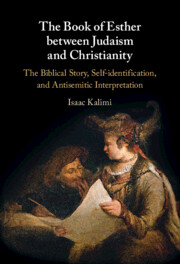7 results
A PUZZLE IN THE MANUSCRIPT TRADITION OF POLYBIUS
-
- Journal:
- The Classical Quarterly , First View
- Published online by Cambridge University Press:
- 12 February 2025, p. 1
-
- Article
-
- You have access
- Open access
- HTML
- Export citation
4 - Mobile Arabic Learning from Egypt to the Deccan
-
- Book:
- Mobile Manuscripts
- Published online:
- 30 January 2025
- Print publication:
- 06 February 2025, pp 177-212
-
- Chapter
- Export citation
17 - Conclusion
- from Part III - Anatolian and Aeolian Myth and Cult
-
- Book:
- Aeolic and Aeolians
- Published online:
- 21 November 2024
- Print publication:
- 21 November 2024, pp 519-552
-
- Chapter
- Export citation

The Book of Esther between Judaism and Christianity
-
- Published online:
- 14 July 2023
- Print publication:
- 06 July 2023
RADIOCARBON DATING OF MANUSCRIPTS KEPT IN THE CENTRAL LIBRARY OF THE UNIVERSITY OF TEHRAN
-
- Journal:
- Radiocarbon / Volume 65 / Issue 2 / April 2023
- Published online by Cambridge University Press:
- 02 February 2023, pp. 307-321
- Print publication:
- April 2023
-
- Article
-
- You have access
- Open access
- HTML
- Export citation
Zoroastrian ritual and exegetical traditions: the case of the Iranian Pahlavi Yasna
-
- Journal:
- Bulletin of the School of Oriental and African Studies / Volume 84 / Issue 3 / October 2021
- Published online by Cambridge University Press:
- 10 March 2022, pp. 469-504
- Print publication:
- October 2021
-
- Article
-
- You have access
- Open access
- HTML
- Export citation
Colophons and Marginal Notes of the Avestan Manuscripts of the Pouladi’s Collection in Yazd
-
- Journal:
- Iranian Studies / Volume 52 / Issue 1-2 / March 2019
- Published online by Cambridge University Press:
- 01 January 2022, pp. 3-59
- Print publication:
- March 2019
-
- Article
- Export citation

